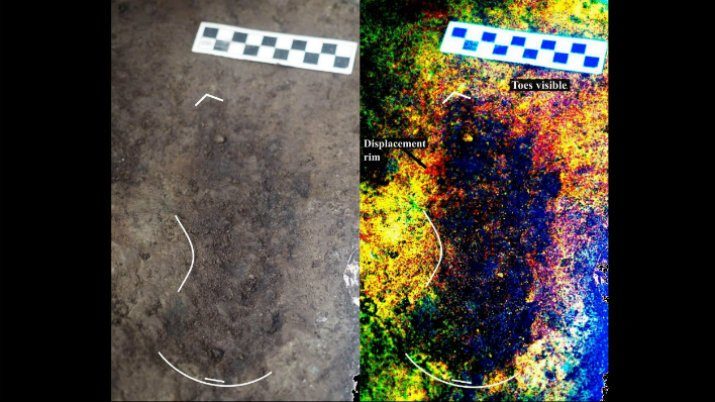
The footprints were found buried in the sand of a beach on Calvert Island, a remote Canadian area accessible only by boat. The first footprint was found in 2014, but over the course of two years, a team from the Hakai Institute and the University of Victoria in British Columbia discovered 29 in all, including the footprints of two adults and a child.
The prints were carbon-dated to be between 11,000 and 14,000 years old, placing them around the end of the last ice age, when sea levels were about six to 10 feet lower than they are now.
It was around this time that humans were hypothesized to have crossed from Asia to North America, possibly following the coastlines. According to estimates by the team, the footprints were made in an area just above the post-ice age high-tide line.
"As this island would only have been accessible by watercraft 13,000 years ago, it implies that the people who left the footprints were seafarers who used boats to get around, gather and hunt for food and live and explore the islands," says Duncan McLaren, the lead author of the new research, published in PLOS One.
The dating of the footprints also implies that humans entered the Americas earlier than expected. The footprints may also point to the existence of a phenomenon called 'the Kelp Highway,' a long string of kelp forests that allowed early people to survive along the coasts of North America.
Considering that most ancient books and records were lost or destroyed after only a few centuries, it's amazing that a handful of footprints on an isolated beach in Canada survived over ten millennia to give clues about early human history.



Reader Comments
Blue fish caves directly challenged mainstream thinking, to read more here is this link to a Smithsonian article,
What Happens when an archeologist Challenges Mainstream Scientific Thinking
[Link]
Sorry can't provide any snips from the article for some reason I can't copy or paste. So I hope the link works. It is a most interesting article.
They never give credit to those that did the discovery. The winged dino found in a slate quarry. We know the profs name but not the guy that discovered it.
If you are working on a project and find Stuff you had better destroy it or lose your job.
Locally a few footprints were found and all but 1 were destroyed. I'd like to see the last one.
I found dinosaur skin but will never tell any academic where it is. Amateurs OK.